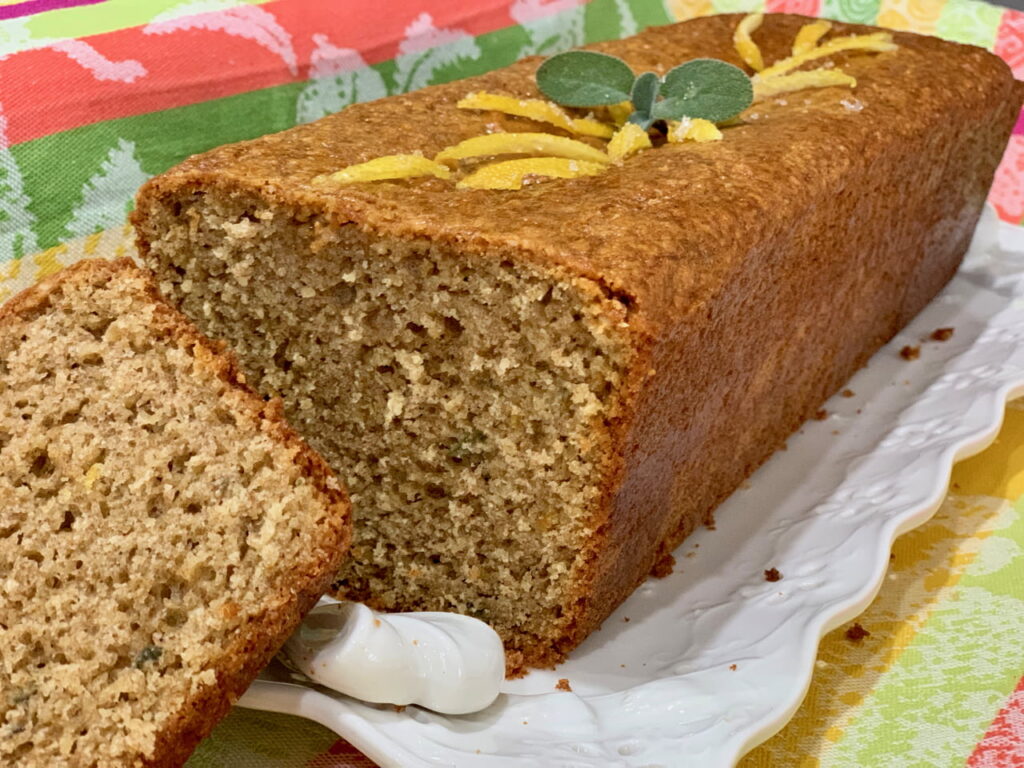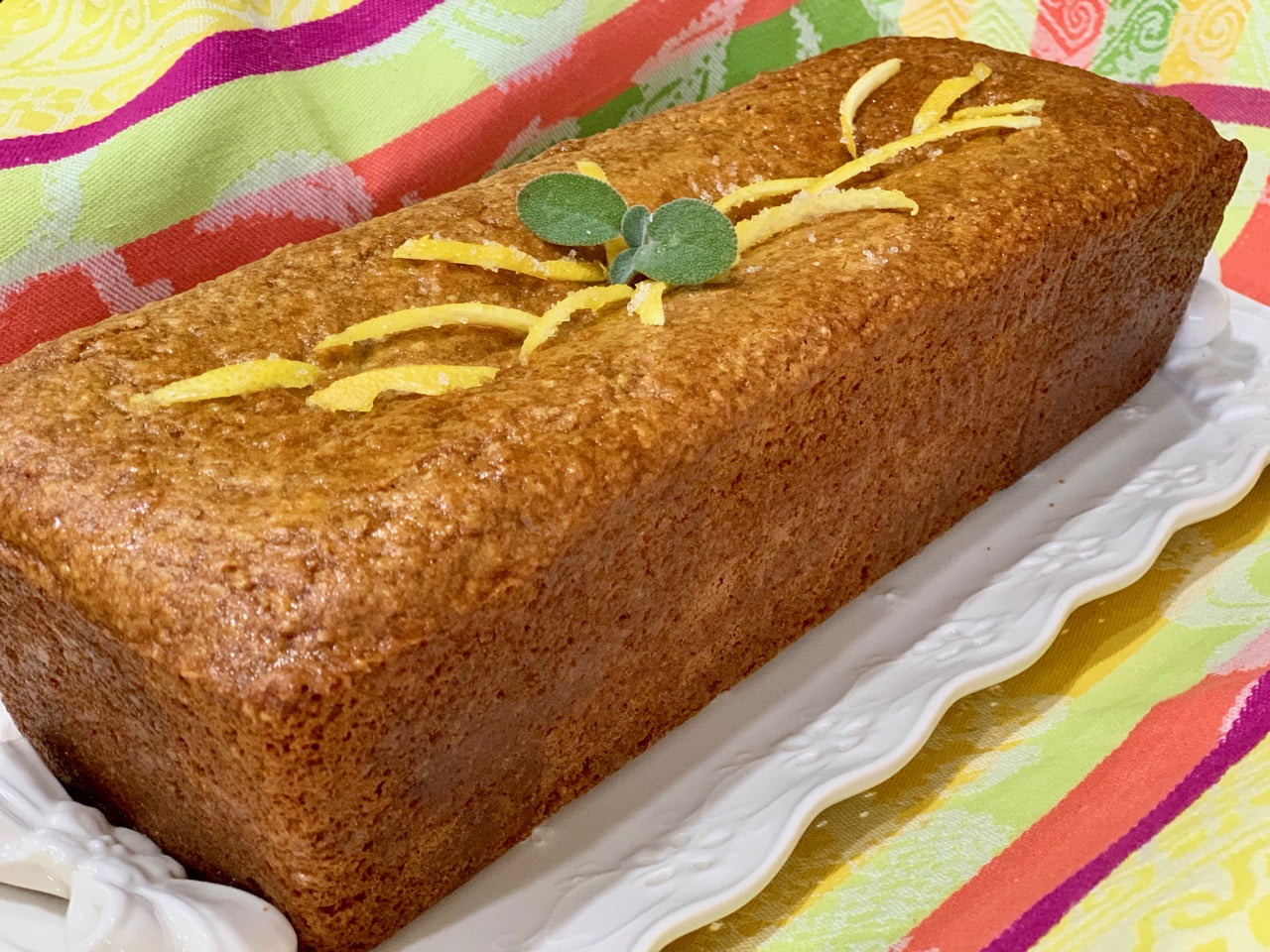Sage Lemon Tea Cake, made with fresh sage, lemon rinds, lots of olive oil, spelt and oat flour, is as healthy an afternoon tea cake Recipe gets!
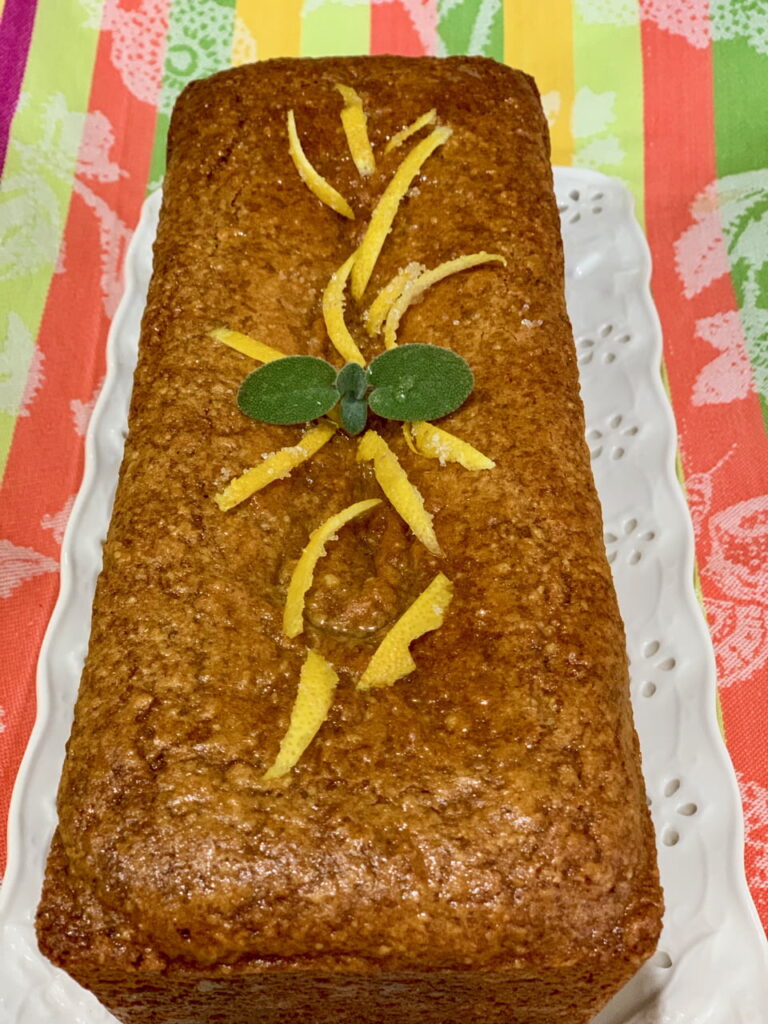
Tea Cake For Tea Time
Tea cakes are the absolute best part of an afternoon tea time. They are not intended to be overly sweet, or to compete with a dessert cake.
Tea time is intended to be a moment in the late afternoon, when energy levels begin to wane and a little morsel of something comforting and slightly healthy is served to nibble on with tea.
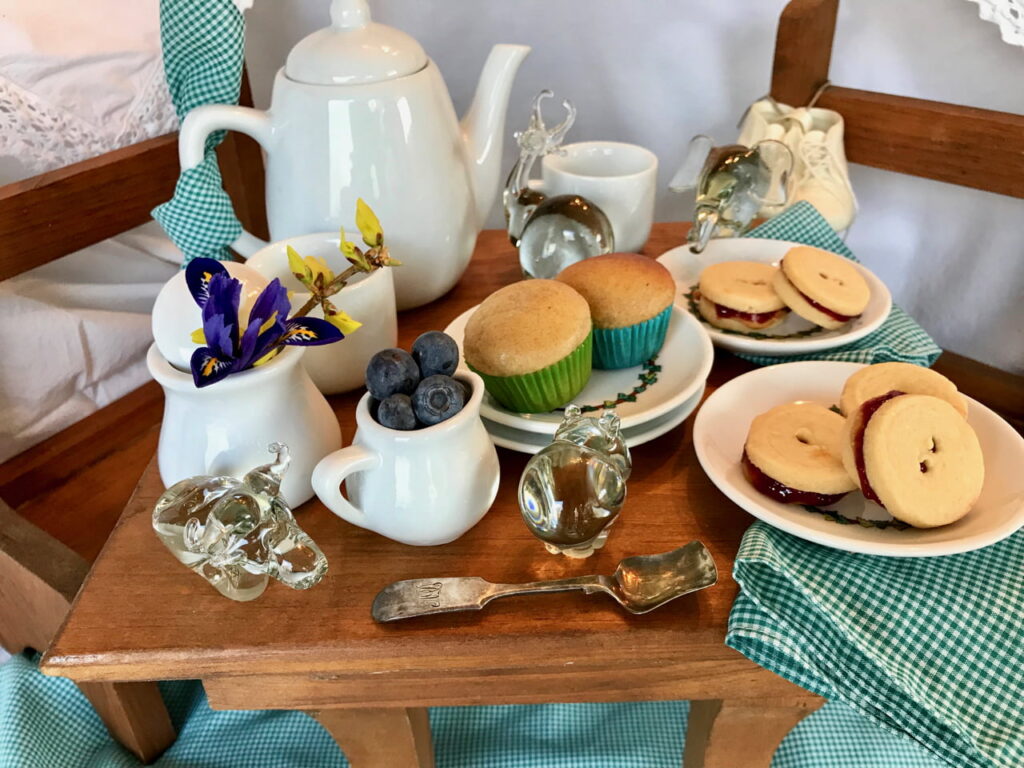
I was first inspired to create this recipe from a friends lovely cake called Gateau au Yaourt, a French Yogurt Cake.
A cake that was lovingly prepared as a dessert.
Sage and Lemon Tea
Often, in the dead of winter, when our immune system is in need of boosting, I will sip on a hot cup of tea made from lemon and sage leaves, to strengthen my immune system.
The vitamin C from the lemon and the heavy dose of antioxidants in the sage is exactly what winters need.
So, I wanted to use the concept of the fresh sage and lemon rinds into a cake that could be transformed into a healthy, less dessert-cake, tea cake. A healthy tea cake.
I am so crazy about this cake now that I will experiment using other fresh herbs in it as well, like rosemary, or even the strong flavor of fresh marjoram.
Sage In My Garden
I’m a GARDEN TO TABLE LIFESTYLE kinda gal. Sage is a rather new and very welcome addition to my gardening.
While it is in the mint family, it isn’t as intrusive as mint, which simply takes over, which don’t get me wrong, I love my Mint.
Keeping sage contained in a large pot or designated area in the garden, much like I have had great luck with in growing Thyme, it is most manageable.
An Herb Garden To Love
I’ve become an avid grower of herbs for both cooking and medicinal properties, drying the leaves at the end of summer or bringing pots inside for the winter.
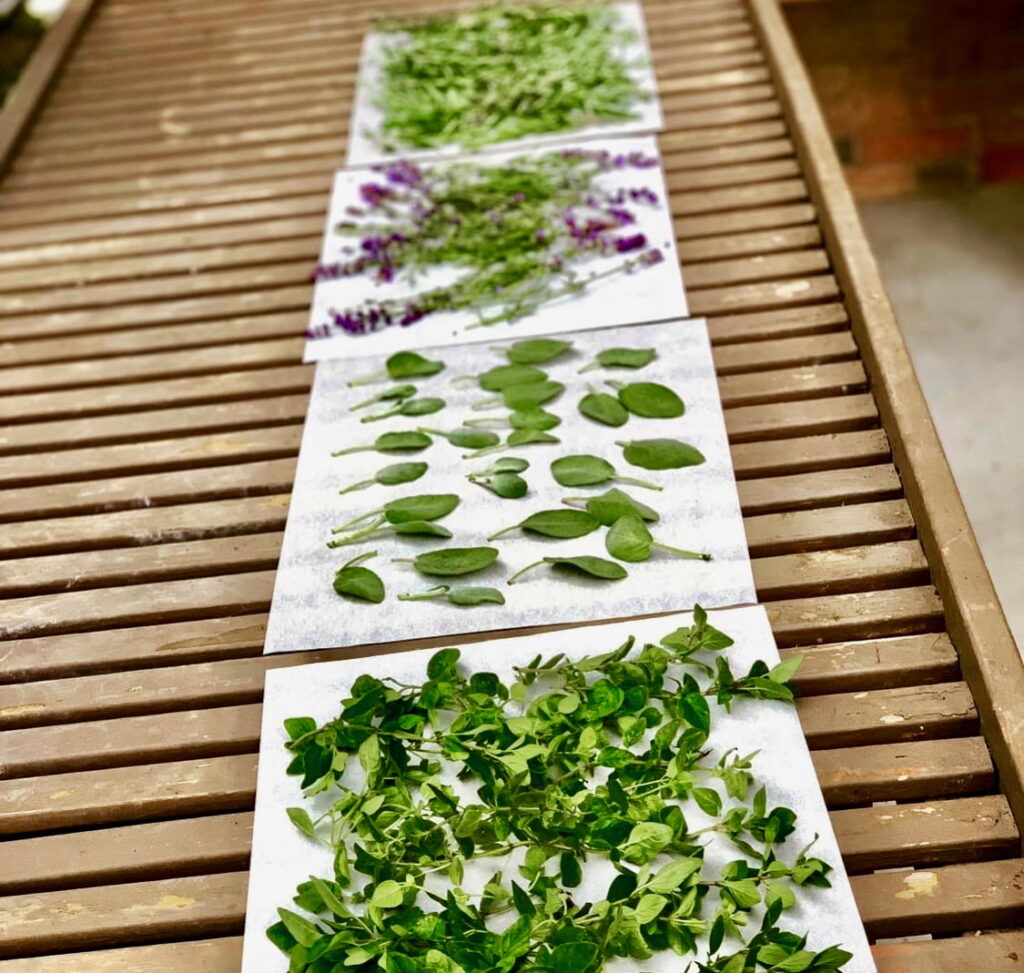
However, let’s not overlook the fact that many flowers we grow can be used in much the same way as herbs.
Having planted a few rose bushes, just for their color, I got to thinking about all the recipes I use rose water in.
Consequently, I bought myself a fun, at home, steam extractor (small and easy to use), and started extracting the concentrated essence from the Rose petals.

Other Sage Recipes To Love
This fuzzy leaf, evergreen plant seems more shy.
It grows happily if the conditions are right, while I think mint could grow on a pile of rocks.
Certainly, you will now find sage added to my garden each year, especially now that I know of its health properties and that it doesn’t go to sleep in the winter; it stays with me.

While making my favorite Sage Yeast Rolls this winter, I decided to go check my garden to see if there was any form of life on the plant.
To my surprise, even while there was snow dumped on top, there were leaves!
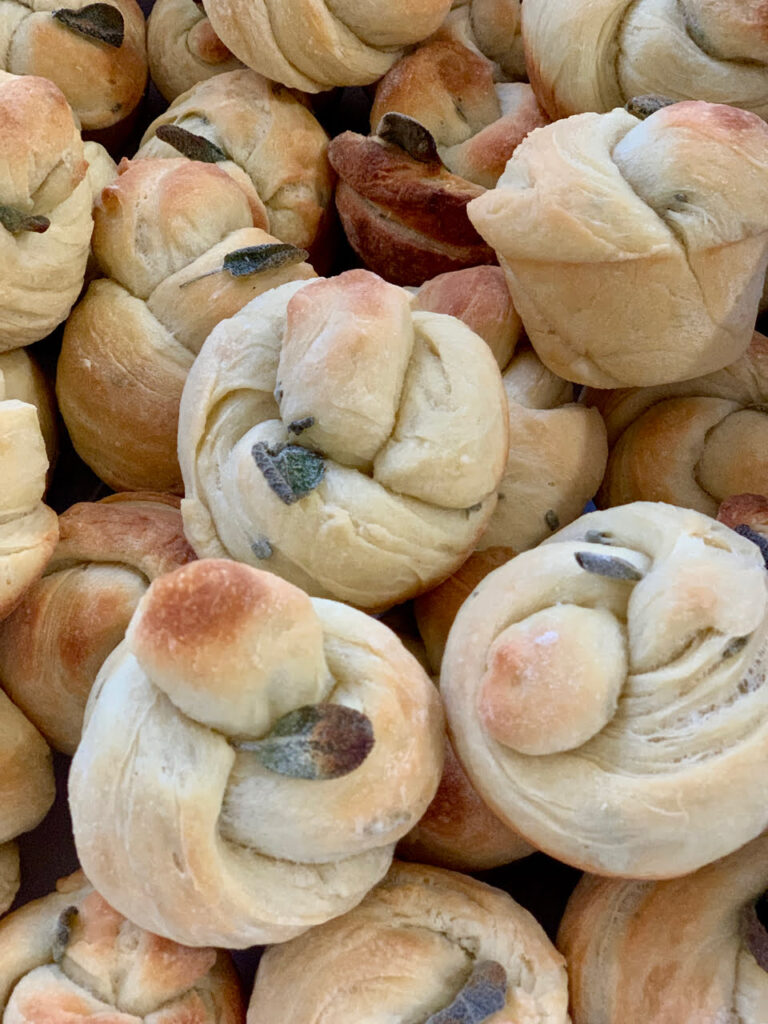
I went back to the sage in my garden again recently (February), and there they were. Like little puppies waiting to play. I picked all the tender leaves the plant had to offer and made this luscious Sage and Lemon Tea Cake.
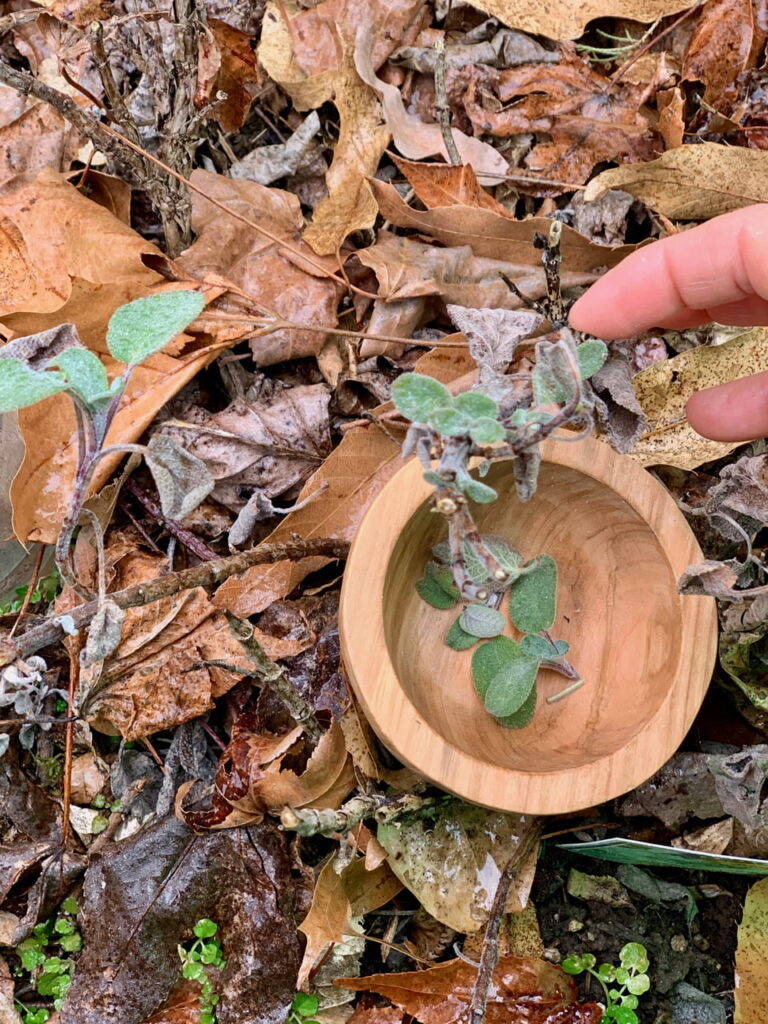
Making Healthy Sage Lemon Tea Cake
Having grown up using olive oil, when most folks would use butter, for baking, cooking, I am an advocate to using olive oil in sweet dishes.
Then, I decided to experiment with my first pie crust, using olive oil instead of butter, and it has become a new favorite ingredient in the Olive Oil Blueberry Pie I make often.
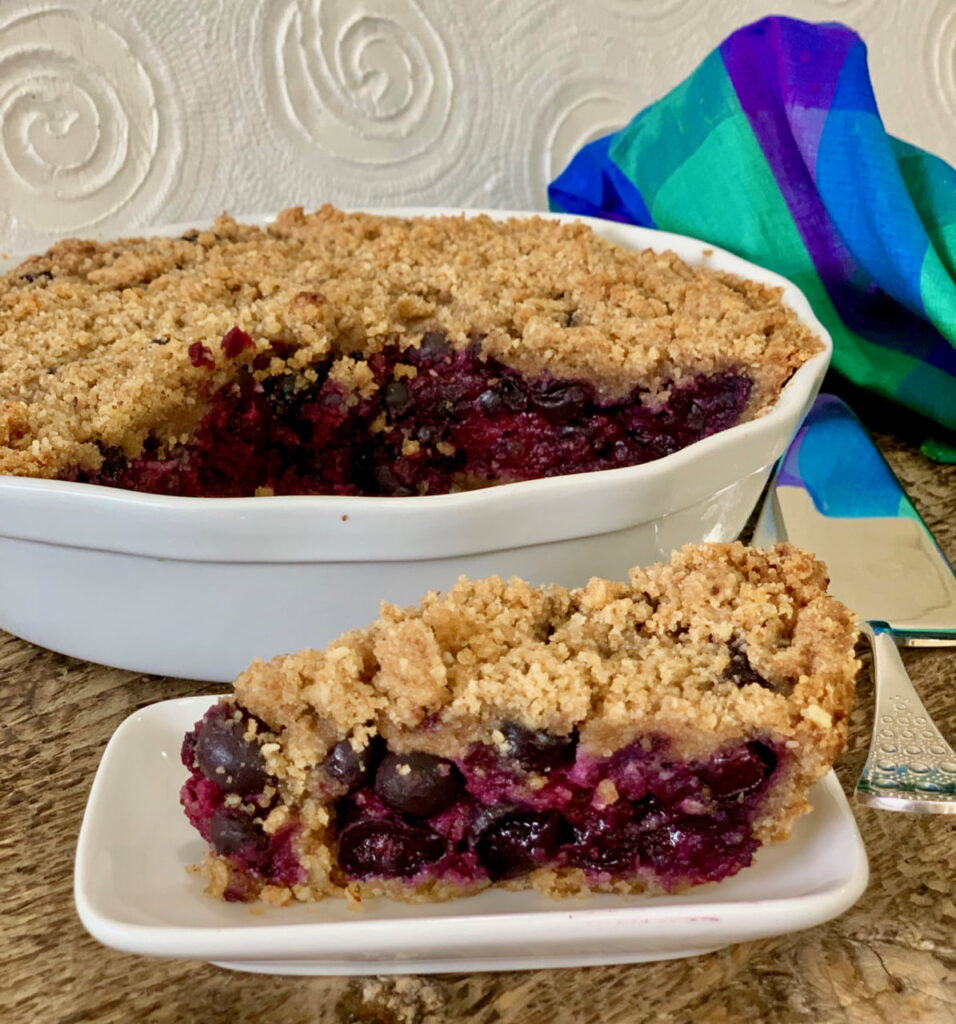
Making A Sage Lemon Tea Cake
For this recipe, I whisked together plain thick yogurt, lots of lemon zest, and as many of my sage leaves as I could gather.
Additionally, in wanting to keep this recipe as healthy as possible, I used spelt flour (my new favorite flour instead of all purpose bleached flour), oat flour and lots of olive oil.
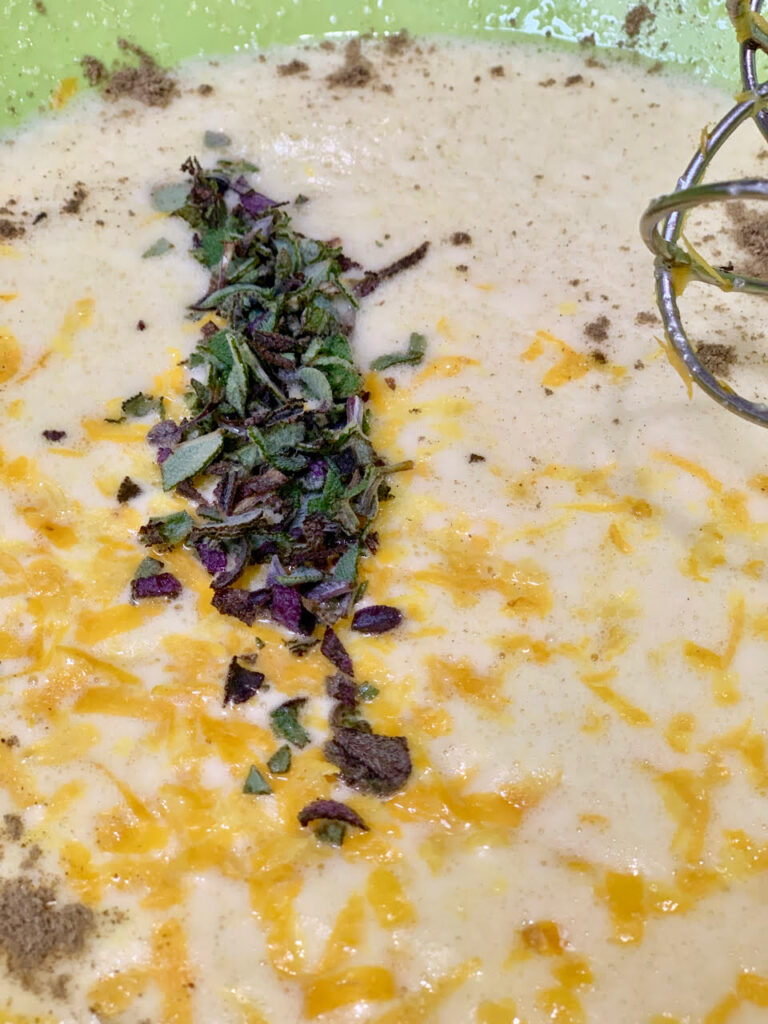
The texture is moist, the flavor delicate and only gently sweet, and to serve it with tea, coffee or even pack for an afternoon snack on the go, is exactly the results I was hoping for!
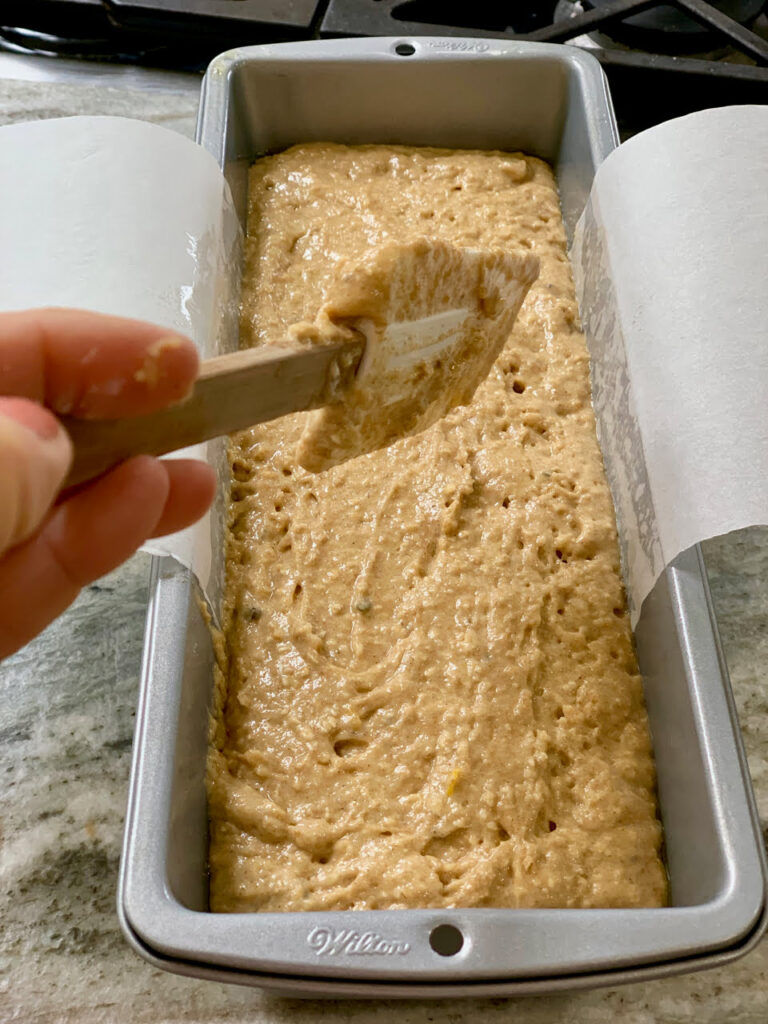
A Baking Tip Most Helpful In Removing Tea Cake From The Pan
Before I came upon this great baking tip, I used to prepare my baking pans the way they’ve been prepared for decades; lots of butter and a dusting of flour.
Now, with just a little light spray of non-stick, or a light brush of olive oil around the pan, a few strips of parchment paper laid like ‘handles’ inside of the pan, make for easy ‘lift and remove’!
Ingredients Needed For Sage Lemon Tea Cake
- Eggs
- Plain yogurt
- Raw sugar
- Olive oil
- Lemon zest
- Sage leaves
- Spelt flour
- Oat flour
- Baking powder
- Baking soda
- Salt
- Confectionary sugar
- Lemon juice
Equipment Needed
- Mixing bowl
- Whisk
- Loaf pan or bundt pan – this long loaf pan makes for a more attractive loaf of bread or cake and is one I use in place of the wide short pans.
- Measuring cup
- Measuring spoon
- Zester or vegetable peeler
- Citrus press
- Parchment paper
- Cutting board
- Chopping knife
- Wooden spoon
- Oven
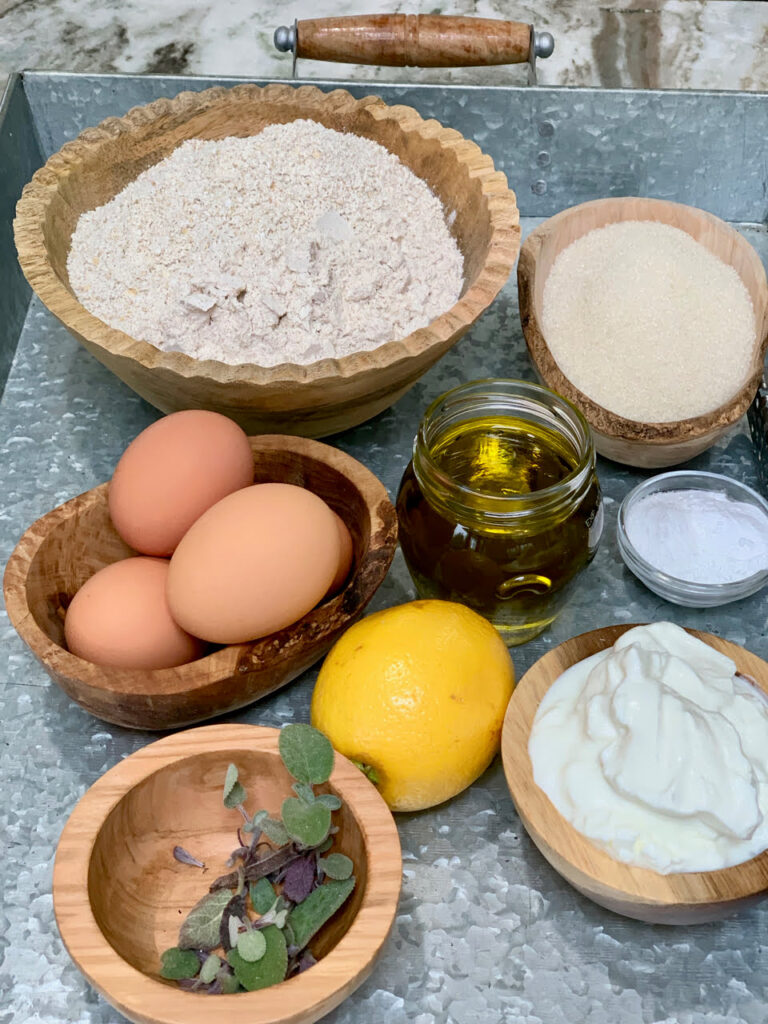
Sage Lemon Tea Cake Recipe
Equipment
- 13"x5" Loaf pan or 2 small
Ingredients
- 4 Large Eggs
- 1 cup Plain Yogurt
- 1/2 cup Raw sugar
- 3/4 cup Olive oil
- 1 tbsp Lemon juice about 1 lemon
- 1 tsp Lemon zest plus a few strips for garnish
- 2 tbsp Sage leaves chopped and a few for garnish
- 2 cups Spelt flour
- 1 cup Oat flour ground rolled oats
- 1 tbsp Baking powder
- 1 tsp Baking soda
- 1/2 tsp Salt
- Glaze
- 1/4 cup Confectioners sugar
- 1 tbsp Lemon juice
Instructions
- Preheat oven to 350.
- Spray non-stick in a long loaf pan, fitted with a strip of parchment paper for easy removal.
- In a large mixing bowl, whisk the eggs, sugar and oil until light and creamy. Whisk in the yogurt, zest, sage leaves.
- Add both flour, baking powder, baking soda and salt. Whisk until the batter is well blended. Transfer to prepared baking pan.
- Bake until tester comes out clean, about 40 – 45 minutes.
- Glaze – Whisk together the confectionary sugar and lemon juice. Drizzle across the cake. Garnish with thinly sliced lemon rinds and a few sage leaves.
